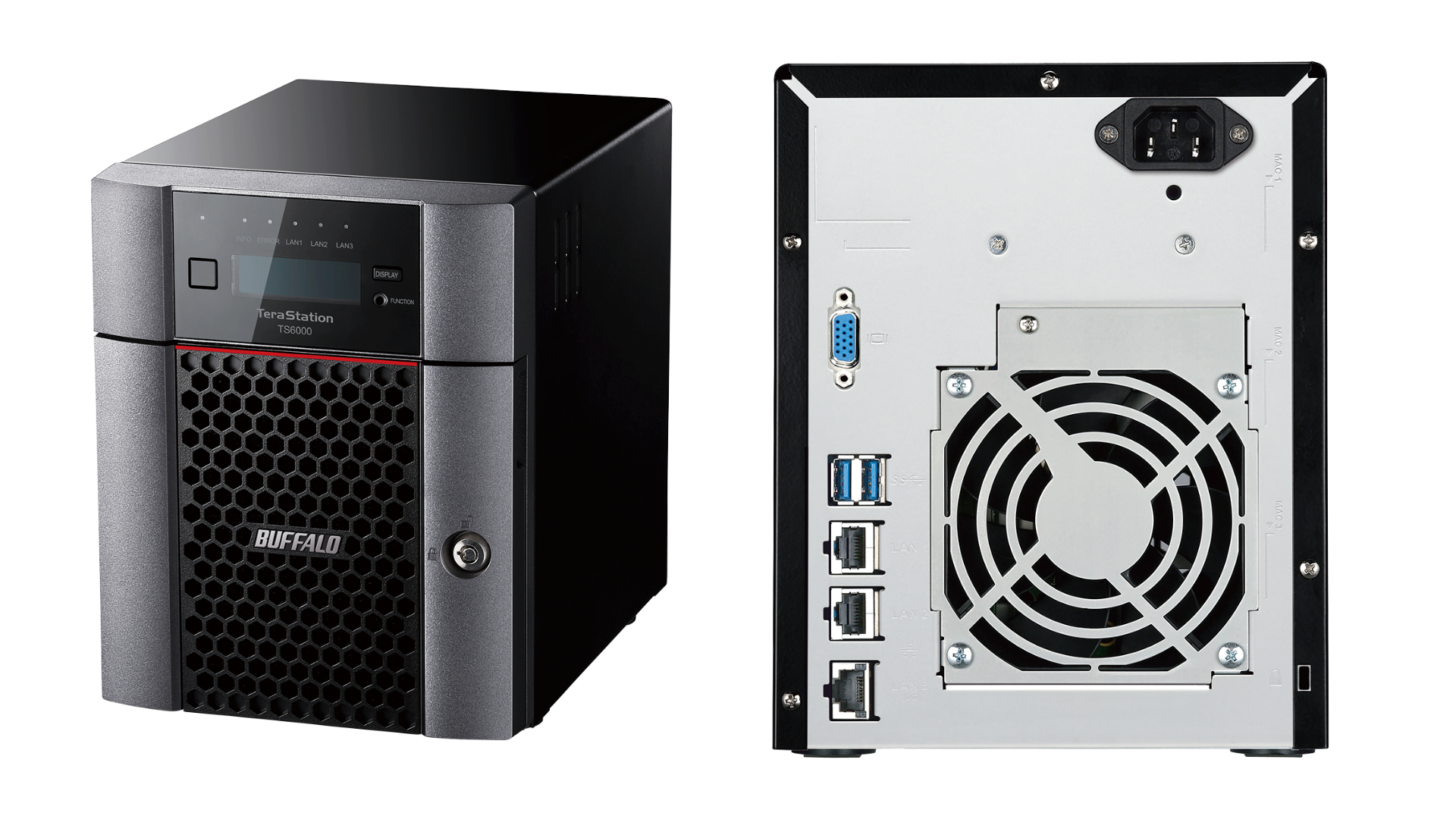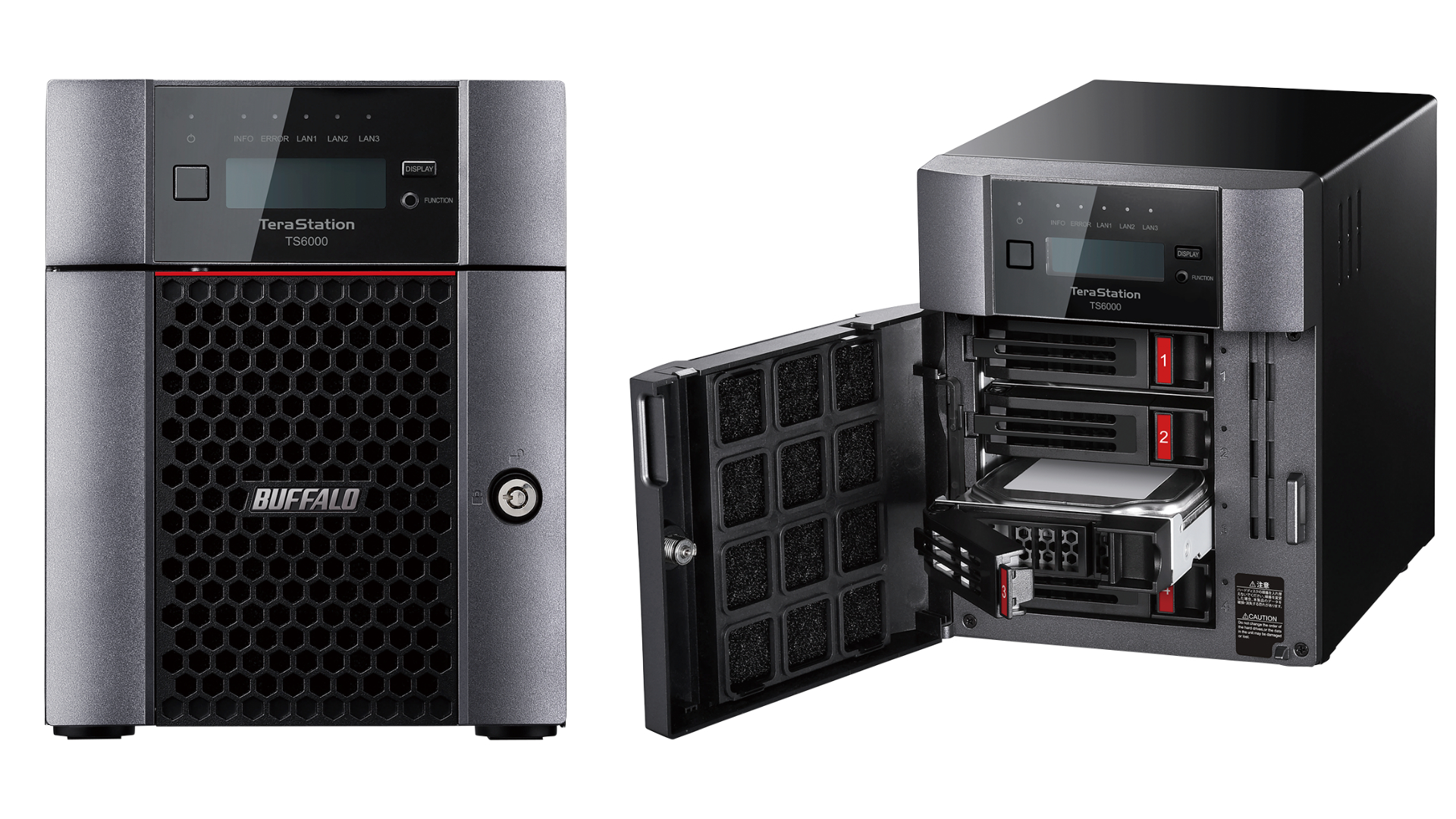Why a NAS drive should be part of your backup strategy
Cloud storage may be convenient, but it has downsides that make NAS devices essential to your backup regime

Backing up your data is one of those activities that computing publications constantly tell you to do, but very few manage to properly achieve. On the face of it, cloud storage has made the process a whole lot easier. In theory, you can set a folder to synchronise with a cloud provider, dump your important stuff in it, and sit back in the confidence that your files will be safeguarded.
But whilst there’s no denying that cloud storage provides some amazingly useful features, relying on it exclusively for your data backup may not be the catch-all panacea it pretends to be. In this feature, we will explain how and why you should also make network attached storage (NAS) part of your backup regime for enhanced ease of use, better performance and greater peace of mind.
The pros and cons of cloud
There are two main benefits to cloud storage – convenience and ubiquity. Once you have installed the software widget and configured which folders to backup to the cloud, in theory your backup will then happen automatically in the background whenever your system is online. Whenever you need to retrieve those files, you can use any device with an Internet connection to do so, often with just a standard web browser.
But as any user of such a system will tell you, it’s far from a bulletproof process. After months of seemingly faultless service from your cloud provider, you might go to retrieve a file and find the synchronisation mysteriously stopped working a few weeks earlier, and that file is not there. Or perhaps the version control system hit a bug and you only have an older file from before a crucial recent edit.
Then there’s the inherent risk of trusting your data to a third party. Many cloud storage service level agreements (SLAs) claim a 99% uptime, which sounds great until you realise that this equates to 3.65 days of downtime a year, with no guarantee that they are not all in a row. So you might not have access to your data when you need it, and that could well be within the terms and conditions you signed up for so no compensation will be available.
You also can’t be sure that your cloud provider’s own backup strategy is entirely bulletproof. Your data can be so valuable it’s bordering on mission-critical, but the cloud provider’s compensation in the case of a loss or breach will be finite and might not be anywhere near its value to you. There also might be questions over how protected they are from cyber-attacks aimed at data theft.
The most everyday issue is one of performance. If you’re only synchronising a few Office application files, your data will be sent to the cloud unnoticeably. But if you’re trying to back up sizeable databases or media files, or lots of files at once, the process could take ages, and even fail before completion. According to Ofcom, in 2018 the typical broadband upload speed was 7.2Mbits/sec. This means that even in optimal conditions, 100MB of files would take nearly two minutes to upload. Restoring could be ten times quicker but will still typically take more than ten seconds for 100MB.
As a result, if you are a media content creator working on gigabytes of files at a time, your cloud backup might never catch up with the version changes you make to large media files. Another consideration if your backup needs run into the gigabytes (and this could be anyone who has been creating files for a few years) is the cost. Whilst you can get quite a bit of cloud storage for free from most providers, even 15GB can fill up quickly. Then you will be paying a monthly fee for more, which you must keep paying to maintain your backup.
The benefits of NAS

This is where employing a NAS device as well as or even instead of a pure cloud service starts to make a lot of sense. With a Gigabit Ethernet interface to the clients on your network, backups will be happening at over 100MB/sec, so the 100MB file backup we mentioned earlier would take a single second to complete, with restoration being similarly speedy. If you need to get back up and running with a system that has had a catastrophic failure, necessitating a multi-gigabyte restore, doing this from a NAS will be essential, as doing it from a cloud service might take literally days.
A NAS device will also be even easier than cloud backup to configure. Cloud systems usually require that files needing backup be placed in a specific folder, and if you don’t do this the files won’t be backed up. A NAS can act as a network drive share, so a simple drag-and-drop will back up, but you could also use a backup agent where source folders are nominated wherever required on the client system’s local storage. Restoring files can be an equally simple drag-and-drop with this configuration as well.
The ease of installation can include the hardware itself. Buffalo’s TeraStation NAS devices, for example, come pre-populated with drives, which mean they’re ready to use out of the box. Other than the power consumption, there are no ongoing costs, just the initial purchase outlay, which means you will never lose your backup through the lapsing of a cloud subscription.
A single NAS device can hold the backups from multiple clients in one central location, which can be made more physically secure than open office space. A NAS device will usually be configured with a multi-drive RAID that mitigates against internal drive failure and can itself be backed up to long-term storage such as tape that can be kept offsite for added security. With a Buffalo TeraStation, the whole NAS is warrantied including drives, for a period of 3-5 years depending on the model, giving complete security.
If you’re a business looking to protect yourself from cyberattack, a feature such as the Snapshot capability on Buffalo’s TeraStation NAS devices could prove a life saver. This takes a backup of your entire system at set intervals and keeps multiple incremental restore points. If a file gets corrupted accidentally, you can easily go back to the last version that wasn’t. Likewise, if a file is accidentally deleted it can be reinstated, and if there is a cyber-attack, the affected files can be returned to their pre-infection versions for a complete recovery.
These factors make NAS devices an essential part of a comprehensive backup regime. The speed of backing up and restoring, the ease of hardware and software setup, and extra security features like Snapshot ensure that a NAS device is a crucial, time-saving and secure choice.
Find out more about Buffalo’s TeraStation NAS devices at Buffalo-Technology.com
Get the ITPro daily newsletter
Sign up today and you will receive a free copy of our Future Focus 2025 report - the leading guidance on AI, cybersecurity and other IT challenges as per 700+ senior executives
ITPro is a global business technology website providing the latest news, analysis, and business insight for IT decision-makers. Whether it's cyber security, cloud computing, IT infrastructure, or business strategy, we aim to equip leaders with the data they need to make informed IT investments.
For regular updates delivered to your inbox and social feeds, be sure to sign up to our daily newsletter and follow on us LinkedIn and Twitter.
-
 Bigger salaries, more burnout: Is the CISO role in crisis?
Bigger salaries, more burnout: Is the CISO role in crisis?In-depth CISOs are more stressed than ever before – but why is this and what can be done?
By Kate O'Flaherty Published
-
 Cheap cyber crime kits can be bought on the dark web for less than $25
Cheap cyber crime kits can be bought on the dark web for less than $25News Research from NordVPN shows phishing kits are now widely available on the dark web and via messaging apps like Telegram, and are often selling for less than $25.
By Emma Woollacott Published
